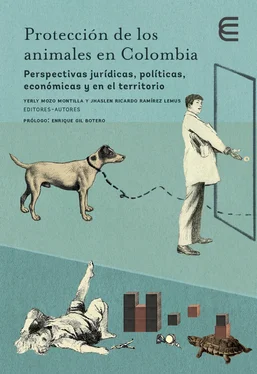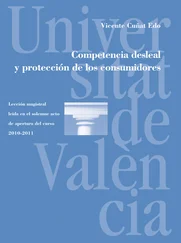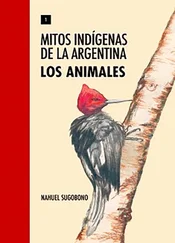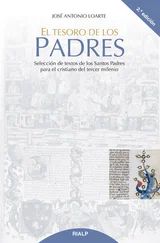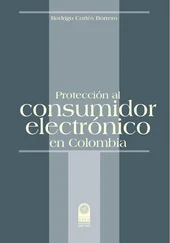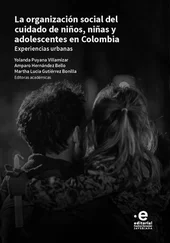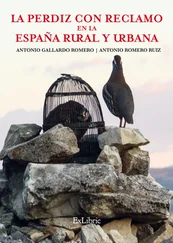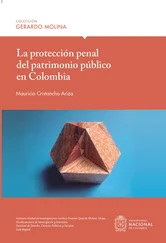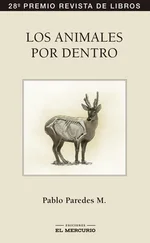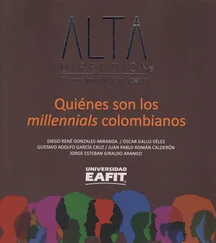Sahar Akhtar. Animal Pain and Welfare. Eds. Tom L. Beauchamp y R.G. Frey. The Oxford Handbook of Animal Ethics. Oxford University Press. (2011).
Sara Zuluaga García. Tráfico ilegal de fauna: una amenaza para los ecosistemas y su salud. El Tiempo. Abril 6 de 2020. Disponible en: https://www.eltiempo.com/vida/medio-ambiente/trafico-ilegal-de-fauna-una-amenaza-para-los-ecosistemas-y-su-salud-481664
Simon Harding. Unleashed. The Phenomena of Status Dogs and Weapon Dogs. Policy Press. (2012).
Sinergia Animal Colombia. Colombia inicia transporte de 21 mil bueyes vivos hacia Irak en medio de críticas. Blog Sinergia Animal. Octubre 8 de 2019. Disponible en: https://www.sinergiaanimal.org/single-post/2019/10/08/Colombia-exportacion-bueyes-vivos
Sonia Rey, David Little y Maureen Ellis. Farmed Fish Welfare Practices: Salmon Farming as a Case Study. Global Aquaculture Alliance. (2019).
Stanley Godlovitch, Rosalind Godlovitch y John Harris. Animals, Men, and Morals: An Enquiry into the Maltreatment of Non-Humans. Taplinger Pub Co. (1972).
Stephanie Söhner. Habeas Corpus-Beschwerden zugunsten von Menschenaffen. rw 7. 2016. Pág. 556-564.
Steven M. Wise. Rattling the Cage: Toward Legal Rights for Animals. Perseus Publishing. (2000).
Teresa Giménez Candela. ¿Por qué estudiar derecho animal? dA. dA. Derecho Animal: Forum of Animal Law Studies 4. 2013.
Tom Regan. The Case for Animal Rights. University of California Press. (1982).
Tom Regan. Empty Cages: Facing the Challenge of Animal Rights. Rowman & Littlefield Publishers. (2005).
Sue Donaldson y Will Kymlicka. Zoopolis: A Political Theory of Animal Rights. Oxford University Press. (2011).
Superintendencia de Vigilancia y Seguridad Privada. Resolución 20174440098277. Por la cual se fijan criterios técnicos y jurídicos para la prestación del servicio de vigilancia y seguridad privada con la utilización del medio canino. Diciembre 15 de 2017.
Victoria Pereira Bengoa, Rosangela Ribeiro Gebara y Melania Gamboa, eds. Mejores estrategias, prácticas y actividades docentes para la enseñanza efectiva del bienestar animal en Latinoamérica. World Society for the Protection of Animals. (2015).
Will Kymlicka. Human Rights without Human Supremacism. Canadian Journal of Philosophy 6. Octubre 2017. Pág. 1-30.
Wolfgang Wohlers. Tierschutz durch Strafrecht? — zur Legitimation tierschutzstrafrechtlicher Normen. rw 1. 2016. Pág. 416-440.
World Animal Protection. Animal Protection Index (API) 2020. Republic of Colombia: Ranking D. 2020. Disponible en: https://api.worldanimalprotection.org/
W Radio. ¿Los servicios de seguridad canina deben ser considerados como maltrato animal? Mayo 8 de 2019. Disponible en: https://www.wradio.com.co/noticias/actualidad/los-servicios-de-seguridad-canina-deben-ser- considerados-como-maltrato-animal/20190508/nota/3900356.aspx
1Cfr. Bruce A. Wagman. Growing Up with Animal Law: From Courtrooms to Casebooks. Journal of Legal Education 2. Noviembre 2010. Pág. 193-208; Greg Miller. The Rise of Animal Law: Will Growing Interest in How the Legal System Deals with Animals Ultimately Lead to Changes for Researchers? Science 6025. Abril 2011. Pág. 28-31; Bernard E. Rollin. Animal Rights as a Mainstream Phenomenon. Animals (Basel) 1. Enero 2011. Pág. 102-115; Teresa Giménez Candela. ¿Por qué estudiar derecho animal? dA. dA. Derecho Animal: Forum of Animal Law Studies 4. 2013; Akisha Townsend. An Opportune Quest: The Development of Animal Law Courses in the United States. Journal of Animal Ethics 1. 2013. Pág. 72-84; Anne Peters. Vom Tierschutzrecht zu Legal Animal Studies: Forschungsdesiderate und -perspektiven. rw 7. 2016. Pág. 325-337.
2Herencia del derecho romano y concepción aún vigente en todas aquellas codificaciones inspiradas en el código napoleónico de 1804 (Libro segundo, título primero, capítulo ii, sección 28). Cfr. Corps Législatif. Code Civil des Français. Imprimerie de la République. (1804). Disponible en: https://reader.digitale-sammlungen.de/resolve/display/bsb10508757.html; Romina del Valle Aramburu. ¿Encontramos influencia romanística en las regulaciones jurídicas de los animales en el derecho actual? Anales de la Facultad de Ciencias Jurídicas y Sociales de la Universidad Nacional de La Plata 48. 2018. Pág. 941-962
3A partir, entre otras, de las muy difundidas tesis de Kant. En específico con una de sus lecciones “Von den Pflichten gegen Thiere und Geister”, en Immanuel Kant. Vorlesung zur Moralphilosophie. De Gruyter. (2004).
4De aquí se desprenden, por ejemplo, las muy difundidas “Cinco Libertades” para que el animal se encuentre libre de hambre y sed, de miedo y estrés, de incomodidad, de dolor, heridas o enfermedades y que se preserve su libertad conductual. Cfr. Francis William Rogers Brambell. Report of the Technical Committee to Enquire into the Welfare of Animals Kept under Intensive Livestock Husbandry Systems. Her Majesty’s Stationery Office. (1965); Kimberly K. Smith. Governing Animals: Animal Welfare and the Liberal State. Oxford University Press. (2012).
5Cfr. Jorge Riechmann. Todos los animales somos hermanos: ensayos sobre el lugar de los animales en las sociedades industrializadas. Editorial Universidad de Granada. (2003).
6Si bien ha variado consecuentemente su postura en trabajos más recientes, es reconocido como gran difusor: Peter Singer. Animal Liberation. A New Ethics for our Treatment of Animals. Harper Collins. (1975). Algunos trabajos relacionados previos: Stanley Godlovitch, Rosalind Godlovitch y John Harris. Animals, Men, and Morals: An Enquiry into the Maltreatment of Non-Humans. Taplinger Pub Co. (1972).
7Tom Regan. The Case for Animal Rights. University of California Press. (1982); Steven M. Wise. Rattling the Cage: Toward Legal Rights for Animals. Perseus Publishing. (2000); Tom Regan. Empty Cages: Facing the Challenge of Animal Rights. Rowman & Littlefield Publishers. (2005); Sue Donaldson y Will Kymlicka. Zoopolis: A Political Theory of Animal Rights. Oxford University Press. (2011); Will Kymlicka. Human Rights without Human Supremacism. Canadian Journal of Philosophy 6. Octubre 2017. Pág. 1-30. Pese a la diferencia de contexto y profundidad de análisis, un gran precursor del reconocimiento de derechos fue Henry Salt. Animals’ Rights: Considered in Relation to Social Progress. George Bell & Sons. (1894).
8Gary L. Francione. Animals Property & the Law (Ethics and Action). Temple University Press. (1995); Gary L. Francione. Animals as Persons: Essays on the Abolition of Animal Exploitation. Columbia University Press. (2009).
9Cass R. Sunstein y Martha C. Nussbaum. Animal Rights: Current Debates and New Directions. Oxford University Press. (2004); Martha C. Nussbaum. Frontiers of Justice: Disability, Nationality, Species Membership. Harvard University Press. (2007); Robert Garner. A Theory of Justice for Animals: Animal Rights in a Nonideal World. Oxford University Press. (2013).
10Entre otros reconocidos juristas anglosajones: H. L. A. Hart. Death and Utility. The New York Review of Books. Mayo 1980. Disponible en: https://www.nybooks.com/articles/1980/05/15/death-and-utility/; Richard A Posner. Animal Rights (reviewing Steven M. Wise, Rattling the Cage: Toward Legal Rights for Animals (2000)). The Yale Law Journal 110. 2000. Pág. 527. También desde el plano de la filosofía política: Peter Carruthers. The Animals Issue: Moral Theory in Practice. Cambridge University Press. (1992).
11Por ejemplo, los habeas corpus para grandes mamíferos en zoológicos, la citación de animales como testigos o las peleas por su custodia son algunos de los eventos más difundidos mediáticamente. Cfr. Barbara Newell. Animal Custody Disputes: A Growing Crack in the Legal Thinghood of Nonhuman Animals Essay. Animal Law Review 6. 2000. Pág. 179-184; Gustavo Federico de Baggis. Solicitud de hábeas corpus para la orangután Sandra. Comentario a propósito de la Sentencia de la Cámara Federal de Casación Penal de la Ciudad Autónoma de Buenos Aires, de 18 de diciembre de 2014. Derecho Animal. Forum of Animal Law Studies 1. 2015. Pág. 1-8; Javier Ernesto Baquero Riveros. La libertad para “Chucho”, el oso andino de anteojos. Comentario a la Sentencia de la Corte Suprema de Justicia, Sala de Casación Civil, del veintiséis (26) de julio de dos mil diecisiete (2017). Derecho Animal. Forum of Animal Law Studies 1. 2018. Pág. 96-105; Stephanie Söhner. Habeas Corpus-Beschwerden zugunsten von Menschenaffen. rw 7. 2016. Pág. 556-564.
Читать дальше
